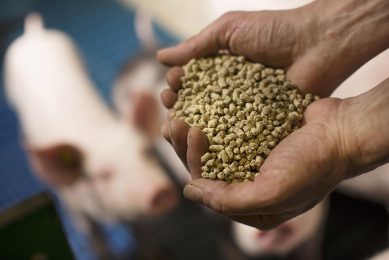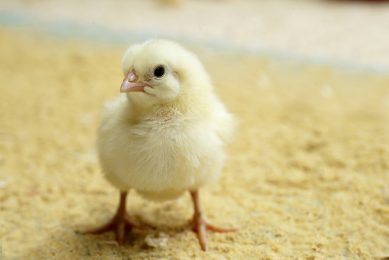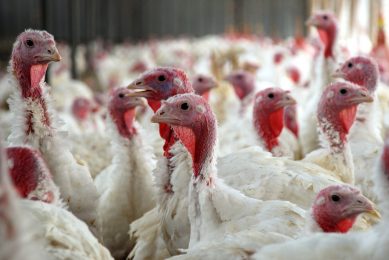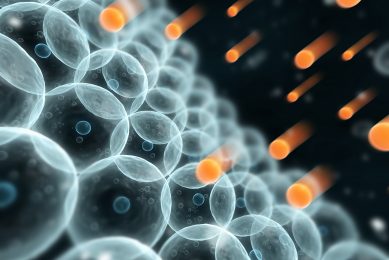Fighting wooden breast nutritionally
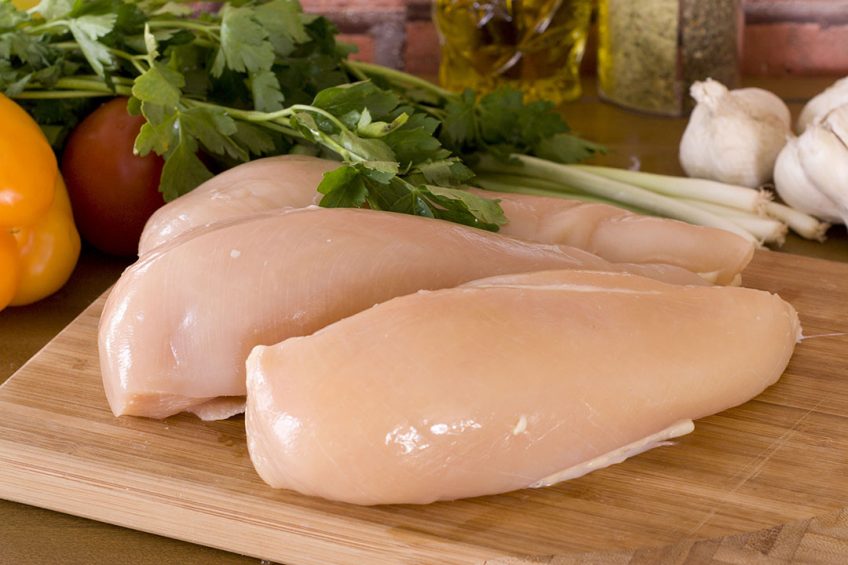
To fulfil the increase in demand for poultry meat there was a selection for higher growth-rate and breast-yield chicken hybrids. However, improved live performances have been accompanied by an increased incidence of muscle abnormalities such as wooden breast: visually hard, out-bulging and pale areas on the ventral surface of the Pectoralis major muscle.
Fast muscle growth is characterised by increased muscle cell sizes (hypertrophy) and not by increased cell numbers (hyperplasia). Nowadays, the growth is so fast, that the efficiency and growth rate can overwhelm the regulatory and homeostatic mechanisms. This can result in cellular dysfunctioning and can lead to breast muscle abnormalities.
Breast fillets affected by the myopathy are hardened or show hardened ridges and can also exhibit white striping. These exhibit a poorer nutritional value, a harder texture and an impaired water holding capacity as compared to normal fillets. Affected breast muscles show strong changes in colour, texture and composition. In Figure 1, normal and severe wooden breast fillets are compared: in case of severe wooden breast, the muscle cells are replaced with collagen.
Figure 1 – Wooden breast myopathy at slaughterhouse (above) and microscopic sample. Left: Unaffected muscle with normal colour and consistency, right: Wooden breast myodegeneration, hardened and pale muscle.
The cause of wooden breast
The exact cause of wooden breast is yet to be identified. There is evidence that wooden breast is caused by expansion of the muscle cells associated with a limited blood supply (oxygen and nutrients) and inadequate removal of metabolic waste-products (carbon dioxide and lactic acid).
The presence of oxidative stress in affected muscle cells is well supported by research. When the extent of muscle damage exceeds the capacity of the repair system, the intracellular free oxygen radical concentration increases, resulting in cell death and inflammation. The damaged muscle tissue is then replaced with collagen.
Economic impact
Due to the changes in composition and the pale, hard areas, there is a change in the appearance of the fillet. This causes a consumer perception of a fatty and less healthy breast fillet. Therefore wooden breast fillets won’t end up in retail.
Batches with severe wooden breast will be integrated in processed meat products and pet food and equals lower profit. Although industry-wide incidence numbers are difficult to assess, available data suggest that 5-10% of commercially produced breast fillets exhibit wooden breast.

Solutions
Different approaches have been put forward to decrease the incidence of wooden breast. However, it is important not to sacrifice performance and profit whilst tackling wooden breast. Nutritional solutions consist of a good growth at start, achieved with extra protein in the (pre)starter, resulting in a higher number of muscle cells (hyperplasia) and improving oxygen transport or preventing muscle cell damage with special feed-additives.
Nuscience developed and validated Q-prove, a product to combat wooden breast without changing the diet and without losing performance. The Nuscience approach consists out of 3 modes of action: Increasing anti-oxidant activity, stimulation of the blood circulation and reducing inflammation and temperature rise in the breast muscle cells.
Q-prove field trial
A field trial was carried out on a commercial farm in the Netherlands (2017). The farm was suffering from high incidences of wooden breast. Nuscience tested in detail 300 carcasses from the control and 150 carcasses from the Q-prove fed group in the slaughterhouse. The scoring (score 0 =no wooden breast, score 1 = moderate wooden breast but no financial consequence, score 2 = severe wooden breast with financial consequence) was performed by a Doctor of Veterinary Medicine with more than 35 years of experience in poultry carcass quality.
The results show a clear effect of the product on the occurrence of severe wooden breast. In the trial the amount of severe wooden breast fillets decreased with 10.7% (Figure 2). Q-prove is an additive that decreases the incidence of wooden breast without the need to adjust the composition of the diet. For this reason, by supplementing with the product it is possible to make full use of the genetic potential.



